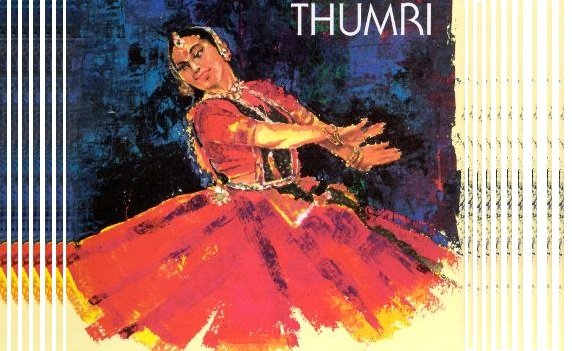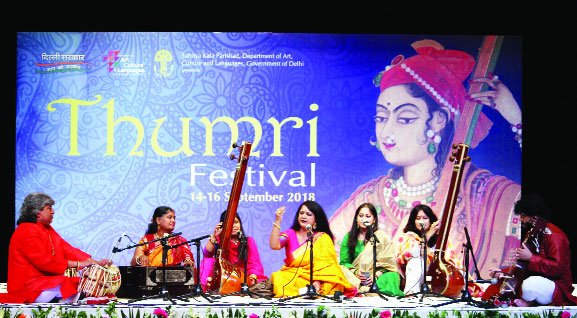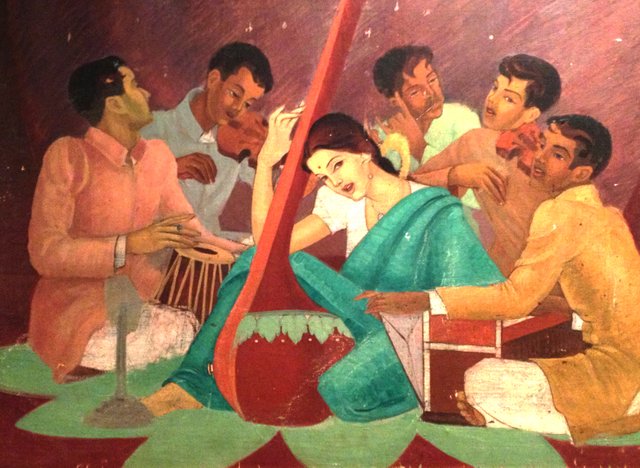
The word “Thumri” means “Thumakana” i.e. “to make a dance-like movements”. Most of these dance performers were courtesans, with their goal as dancing and singing to make themselves as gorgeous as possible. As a result, the main aim of the Thumri was enjoyment, and it habitually brought to mind the Shringara rasa (joy and love). As a rule, it was written in lighter mood Ragas like Piloo or Khamaj. The lyrics were vital as the melody, and creativeness was founded on the lyrics, rather than sargam or Taans.
Thumree is usually a light or semi-classical form, but being cheerful; it is not insignificant or one-dimensional. Lord Krishna’s courtship with the gopis and his companion Radha is a common theme in Thumri, with the last piece as dadra tal, which is customarily the concluding piece of a Thumri concert.
There were many traditionalists who opposed to blend of music and dance in this form. Nevertheless, there were also many classical musicians who were attracted to it, fairly because its liberty to merge notes from other Ragas through the creativeness. For this reason, the Thumri was a part of the selection of many performers, including singers and instrumentalists. This resulted in numerous new forms of the Thumri, which re-introduced the more composite fundamentals, which the first Thumri performers had purposely left out.
Though ironically, yet reasonably, there are modern Thumri traditionalists who oppose this blending of khayal elements just like the purists of a 150 years ago might have opposed the innovative foundation of the Thumri itself. Some criticize that for khayal singers, the Thumri is a kind of “dessert” to be presented only at the end of a concert. On the other hand, there are some music experts and lovers, who argue that the dancing is essential to the Thumree, which the modern performers have injured by reducing it to only a music form.

Thumri and Khayal
Unlike the khayal, which pays meticulous attention to unfolding a raga, thumri restricts itself to expressing the countless hues of shringar by combining melody and words. The contours of a khayal are most definitely broader and fluid. Thus, a khayal singer is capable of encompassing and expressing a wide range of complex emotions.
A thumri singer goes straight to the emotional core of a composition and evokes each yarn of amorous feeling, each strand of sensuous sentiment, with great discretion. Khayal aims at achieving poise and splendour; thumri is quicksilver in tone and ardently romantic in spirit. It needs a delicate heart, and a supple and soulful voice capable of expressing several shadings and colours of tones to bring out its beauty.
To draw an analogy from the world of painting, khayal is closer, in form and spirit, to the unrestrained and energetic world of Renaissance masters like Michelangelo, Raphael and Titian - forcefully executed brush strokes are seen on a broad canvas; whereas thumri, with its affinity for finer points and shades of feeling, emotion and mood, is closer to the finely-detailed still-life paintings of the Dutch masters of the 17th century.

Source
Plagiarism is the copying & pasting of others work without giving credit to the original author or artist. Plagiarized posts are considered spam.
Spam is discouraged by the community, and may result in action from the cheetah bot.
More information and tips on sharing content.
If you believe this comment is in error, please contact us in #disputes on Discord
Downvoting a post can decrease pending rewards and make it less visible. Common reasons:
Submit
Hi! I am a robot. I just upvoted you! I found similar content that readers might be interested in:
http://www.swarmanttra.com/vocal/types-of-vocal/thumri/
Downvoting a post can decrease pending rewards and make it less visible. Common reasons:
Submit